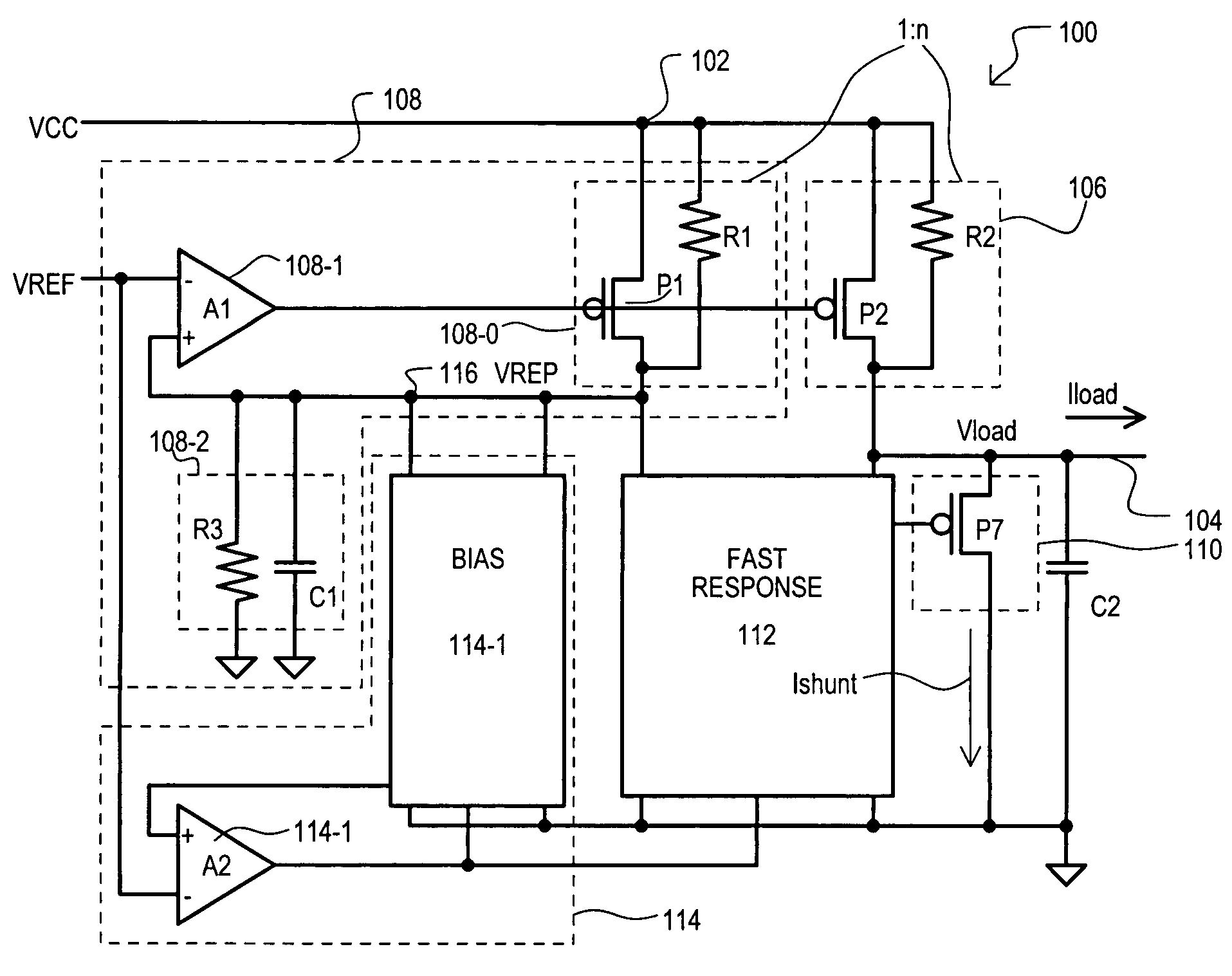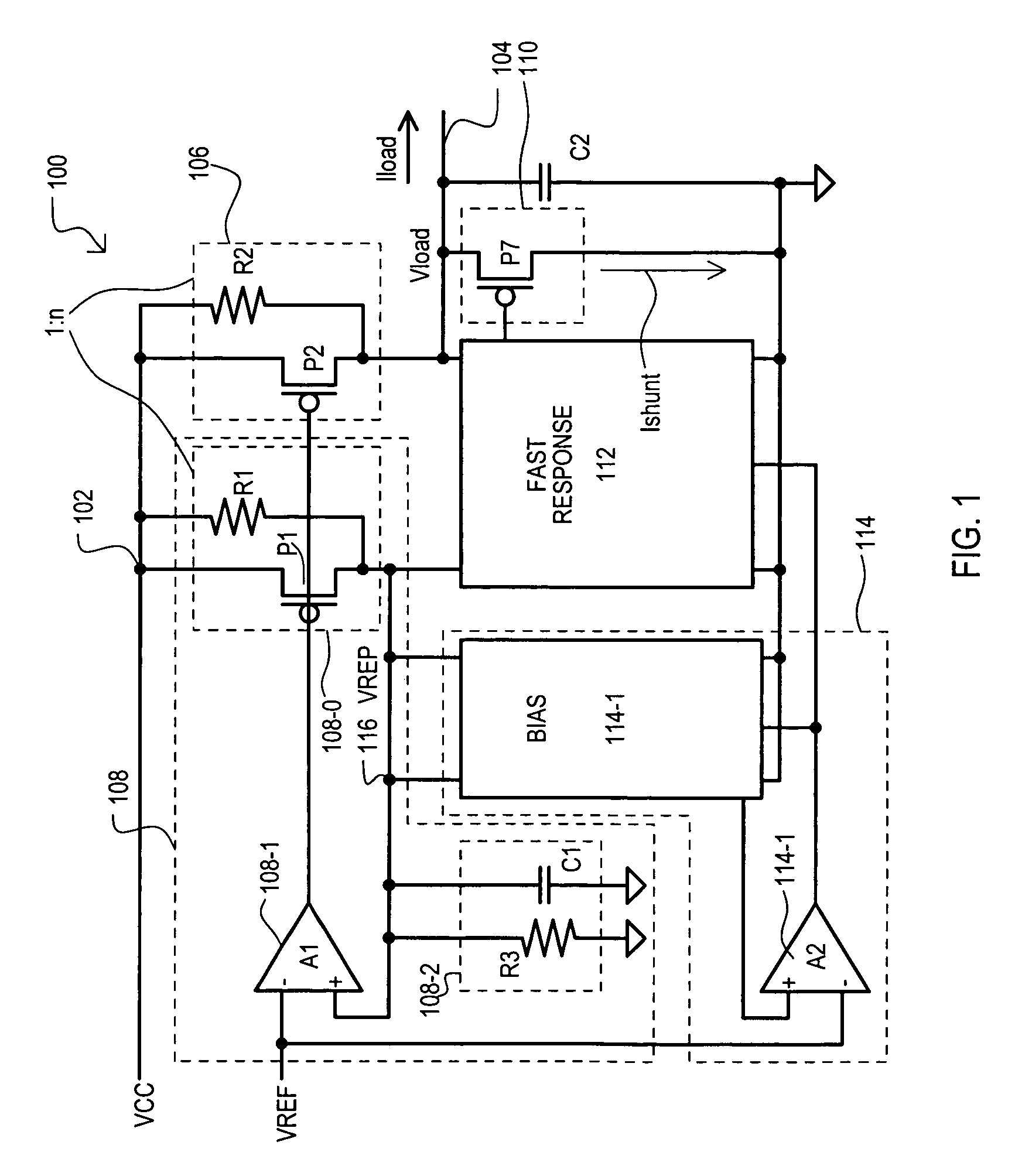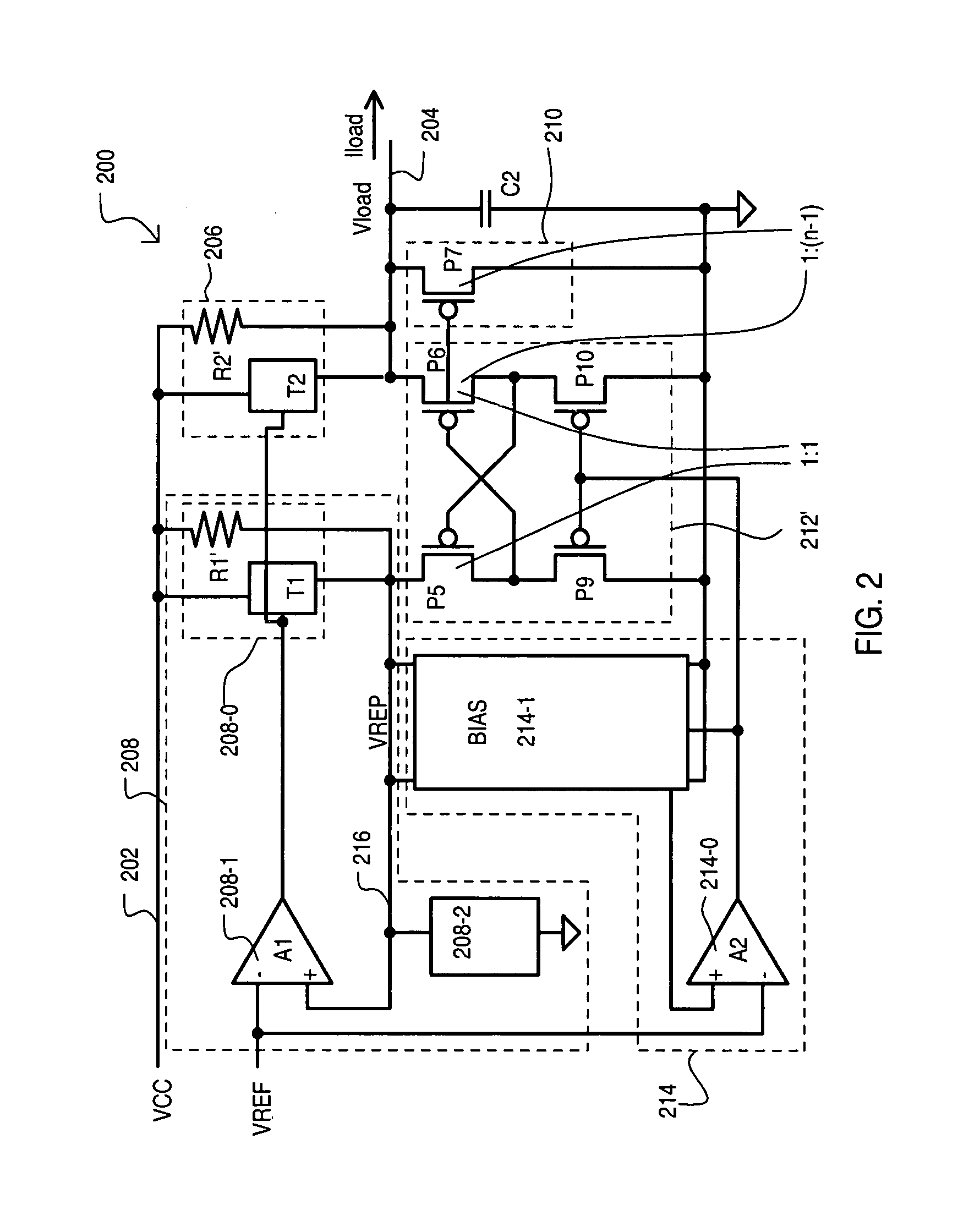Shunt type voltage regulator
a voltage regulator and shunt technology, applied in the direction of electric variable regulation, process and machine control, instruments, etc., can solve the problems of insufficient response at higher frequencies (greater than 1 mhz), considerable power consumption at the high limit of an external power supply range, and less suitable arrangement for other applications. , to achieve the effect of low current and lower speed regulation respons
- Summary
- Abstract
- Description
- Claims
- Application Information
AI Technical Summary
Benefits of technology
Problems solved by technology
Method used
Image
Examples
Embodiment Construction
[0023]Various embodiments of the present invention will now be described in detail with reference to a number of drawings. The embodiments describe a shunt-type voltage regulator that can provide shunt type regulation without consuming large amounts of current at the higher end of a power supply range. In addition, such a voltage regulator can provide a regulating response for a wide frequency range with respect to conventional approaches like those described above.
[0024]A shunt-type voltage regulator according to a first embodiment is set forth in FIG. 1 and designated by the general reference character 100. A voltage regulator 100 can receive a power supply voltage (VCC) at a first supply node 102 and provide a regulated voltage (Vload) at a regulated node 104. A load capacitance is represented in FIG. 1 by capacitor C2.
[0025]In the example of FIG. 1, a voltage regulator 100 can include a load supply circuit 106, a first feedback circuit 108, a shunt circuit 110, a fast response c...
PUM
 Login to View More
Login to View More Abstract
Description
Claims
Application Information
 Login to View More
Login to View More - R&D
- Intellectual Property
- Life Sciences
- Materials
- Tech Scout
- Unparalleled Data Quality
- Higher Quality Content
- 60% Fewer Hallucinations
Browse by: Latest US Patents, China's latest patents, Technical Efficacy Thesaurus, Application Domain, Technology Topic, Popular Technical Reports.
© 2025 PatSnap. All rights reserved.Legal|Privacy policy|Modern Slavery Act Transparency Statement|Sitemap|About US| Contact US: help@patsnap.com



